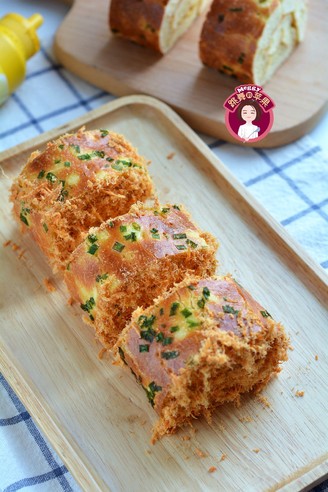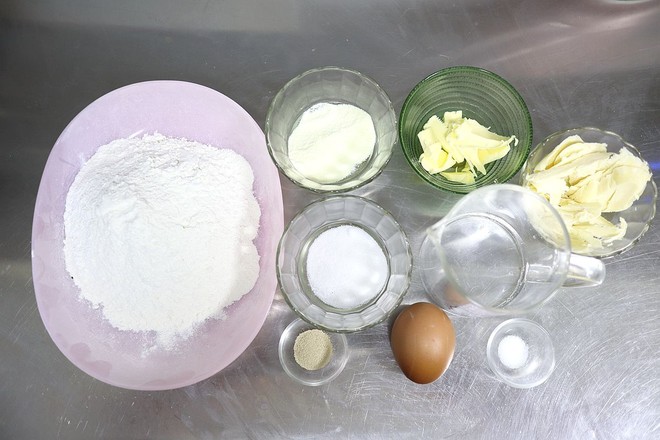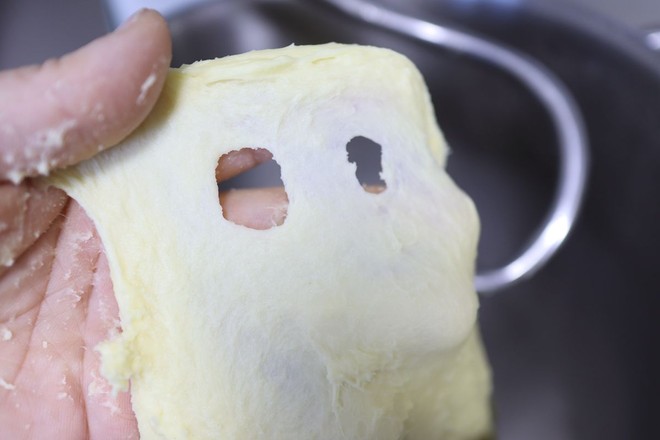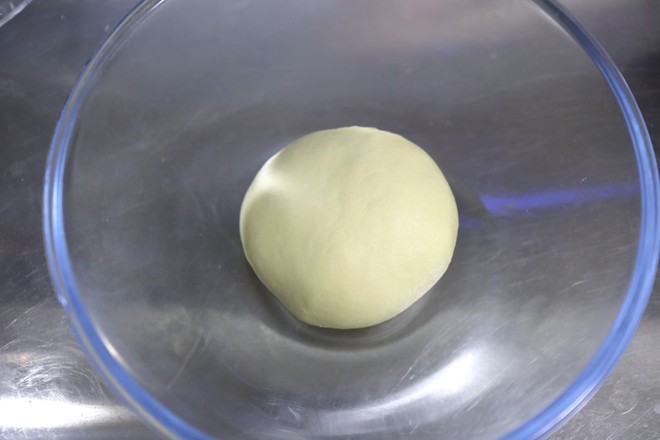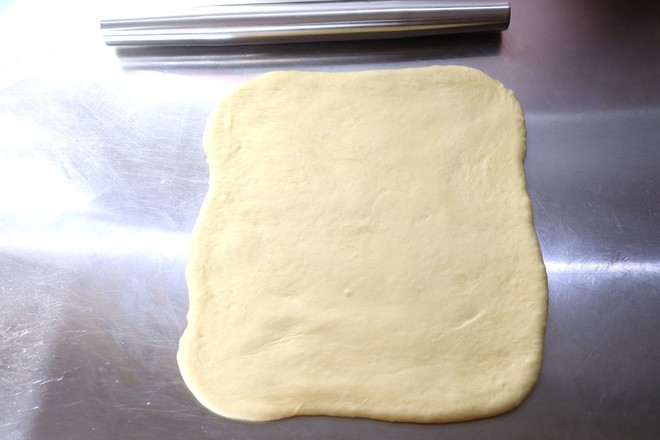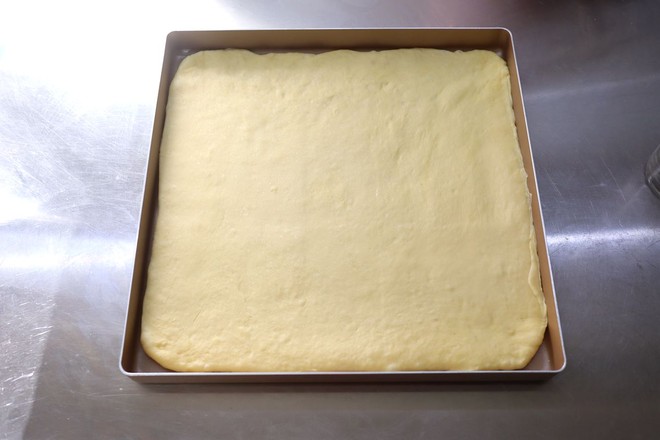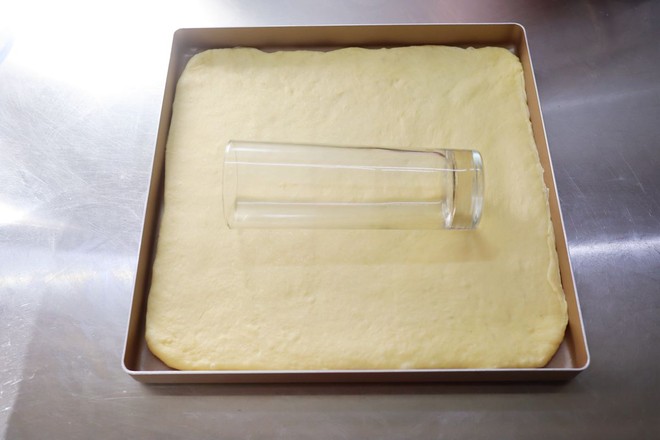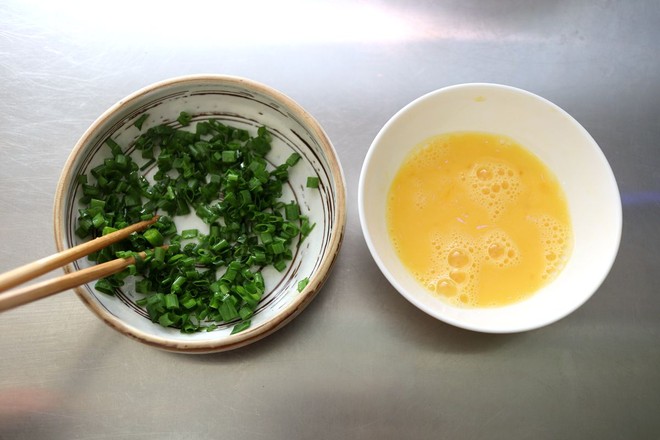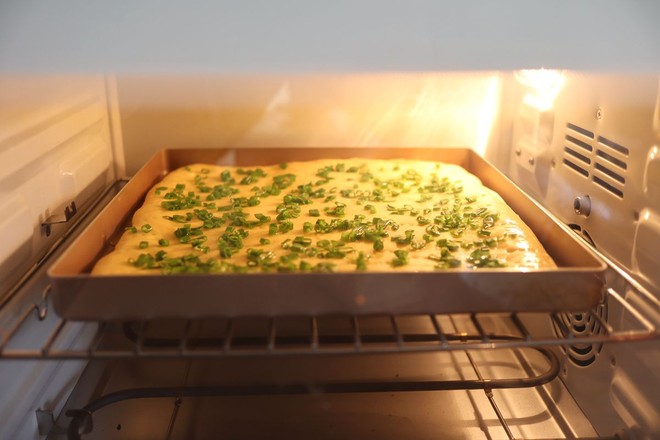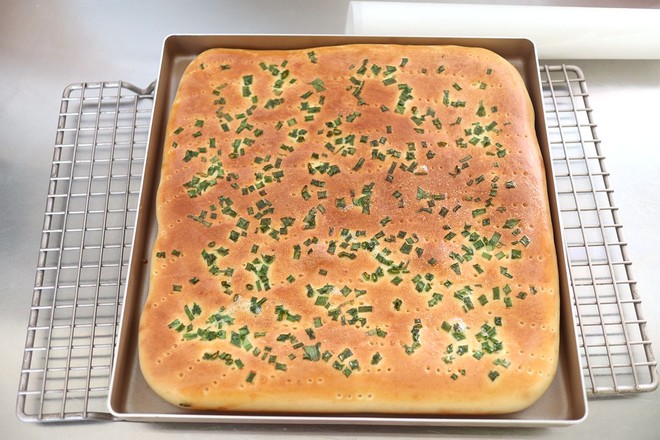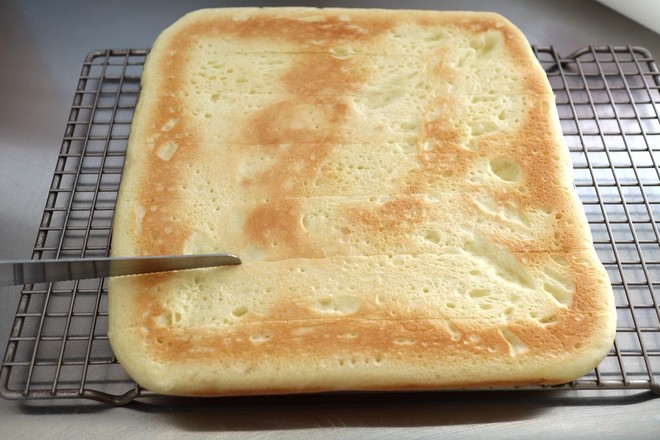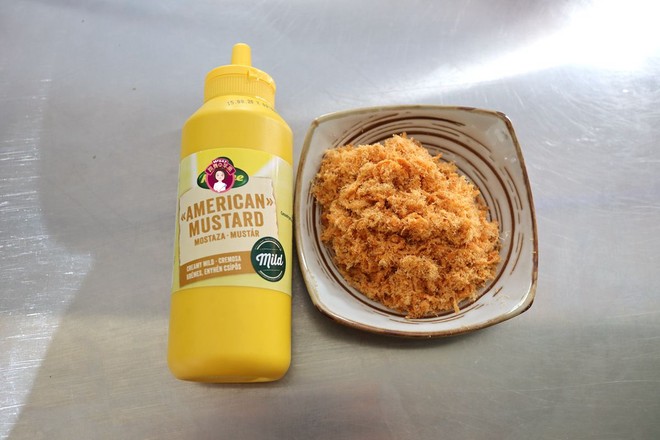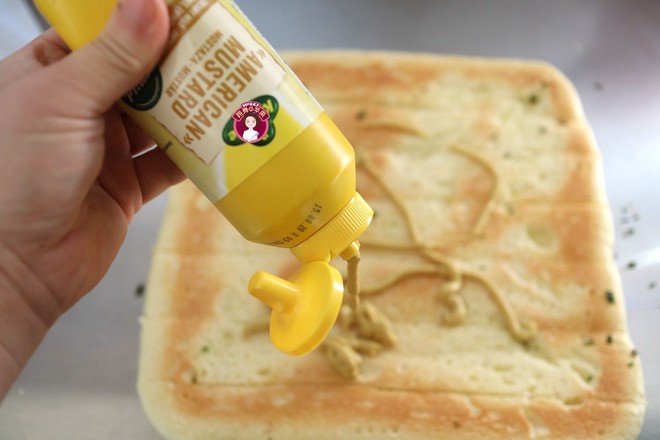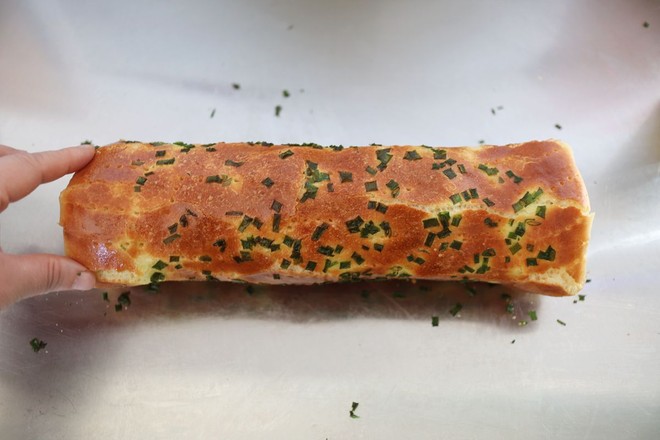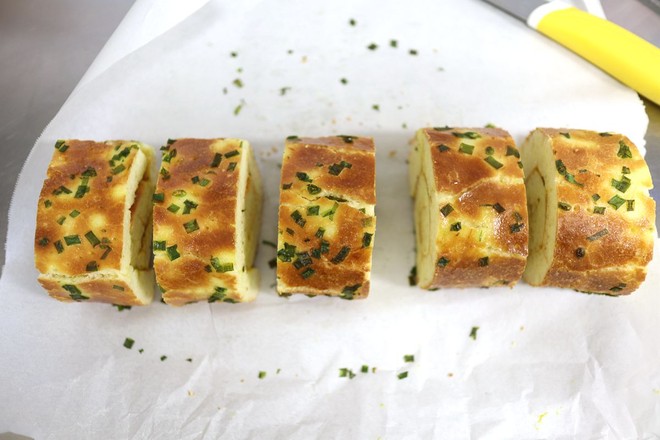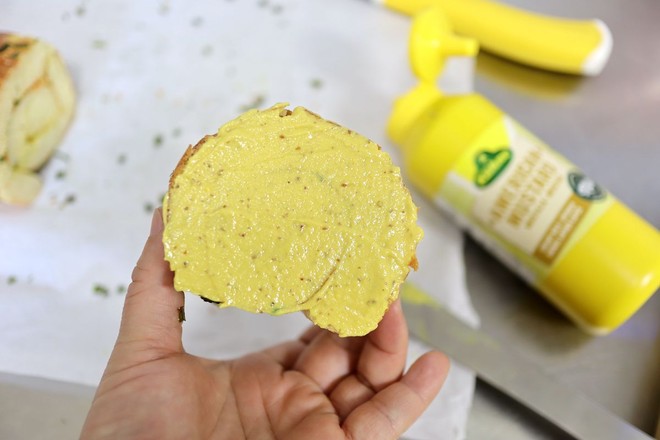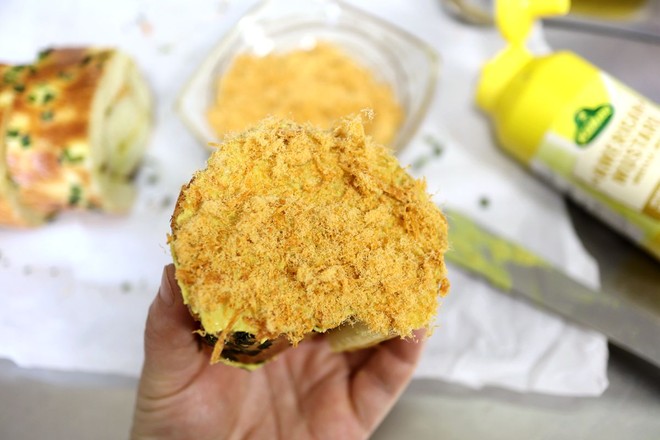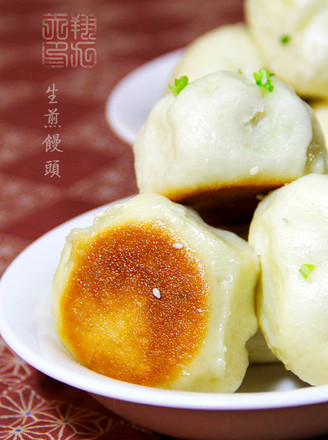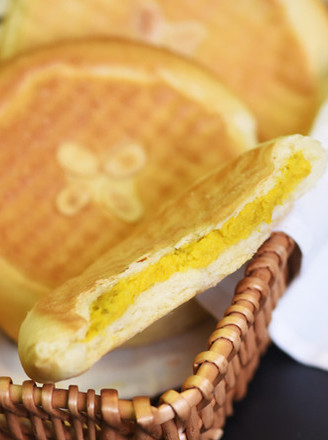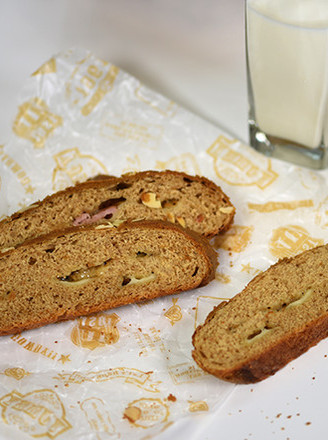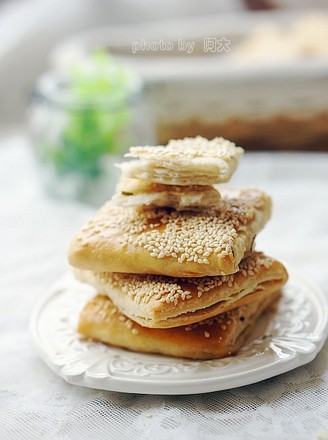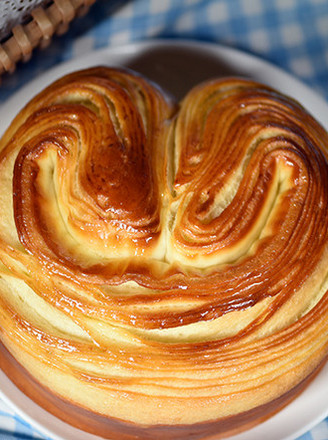Old Noodles Pork Floss Bread Rolls
1.
Group photo of the main bread ingredients: high-gluten flour (bread flour), milk powder, butter, fine sugar, high-sugar-tolerant dry yeast, eggs, room temperature cold water, salt, the flakes on the right are frozen sliced old noodles, which must be completely defrosted Use again
2.
Put all the ingredients except butter into the kneading bucket, first mix at low speed for 2 minutes to form a dough, then turn to medium and high speed for 5-8 minutes, add butter when the coarse film can be pulled out; the water absorption rate of flour and the dryness of the environment are not In the same way, you can reserve 20 grams of water to see how much the dough is increasing or decreasing;
3.
First, completely blend the butter into the dough at low speed, and then turn to high-speed whipping; the dough is smooth and soft and does not stick to the wall of the basin, pull a piece of dough, and slowly pull out a transparent and elastic film on your hands;
4.
The dough is rounded and placed in a kneading bowl, and the Mongolian plastic wrap is placed in a warm and humid place for basic fermentation. If a fermentation tank is used, the temperature is 28, the humidity is 70, and the time is about 1 hour;
5.
When the dough is twice the original size, dip your fingers in the flour and poke a hole on the top of the dough without collapsing, but rebounding slightly, and fermentation is successful;
6.
Place the dough on the chopping board, tap it gently to exhaust, and roll it into a square dough, approximately the same area as the baking pan used;
7.
Transfer the noodles to a non-stick baking pan. I used a 28*28cm non-stick baking pan. There is no need to brush the oil in the baking pan. Roll out the dough again to make it cover the baking pan;
8.
Let me tell you a little trick. If the rolling pin used is too long to lay flat in the baking dish, you can roll the dough with a bucket-shaped water cup, which is more even than stretching by hand; put the dough in a warm and humid place for second fermentation , The temperature is 35, the humidity is 80, or put it in the oven and use the fermentation gear, use a watering can to spray a few times on the inner wall of the oven to increase the humidity;
9.
When the fermentation is about to end, prepare some small ingredients: mince the chives leaves, pour a little oil and mix well, so as to make the roasted green onions leaves green and not yellow; beat the eggs into a bowl;
10.
The noodles are 1.5-2 times the original height. The surface is made of small holes with a fork to prevent uneven heating and bulging during baking. The surface is brushed with egg liquid and sprinkled with chives and spring onions evenly; preheat the oven to 200 degrees;
11.
Put the green body into the middle layer of the preheated oven, fire up and down 180/200 degrees, 13 minutes, adjust according to the actual situation of the oven;
12.
The toasted bread slices are out of the oven immediately, shake it twice, pull out the baking tray, and let it dry on the drying rack for 3 minutes;
13.
Turn the slice of bread over and make a few cuts with a bread knife on the back to facilitate the roll. Do not cut through the crust underneath;
14.
Prepare coarse mustard sauce and pork floss;
15.
While the bread slices are warm and well rolled, squeeze an appropriate amount of coarse mustard sauce on the noodles;
16.
Spread evenly with a spatula, and sprinkle a little pork floss;
17.
Roll the dough sheet into a roll and place the seal on the side; wrap it tightly with greased paper, and place it in a sealed fresh-keeping box for 20 minutes to shape;
18.
Cut off the irregular ends, and then cut into bread rolls of even width;
19.
Spread an appropriate amount of coarse mustard sauce on both ends of the cut surface. Look, the yellow mustard is clear, and you can see the yellow-brown coarse mustard;
20.
Dip some meat floss and you're done!
Tips:
1. The old noodles are the dough made last time, and the amount should not exceed 20% of the main dough flour; the old noodles can be stored in the refrigerator and must be completely deiced before use;
2. The bread slices should be roasted at a high temperature, and the time should not be too long. The water resistance will evaporate and dry out; the roasting temperature and time should be adjusted according to the actual situation of the oven used;
3. There are two reasons for the cracking of bread rolls, one is that the baking temperature is too high or too long, and the other is that the bread slices are unrolled before they reach the hand temperature and the skin is too dry;

